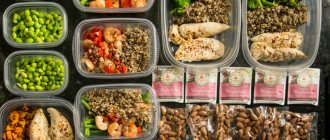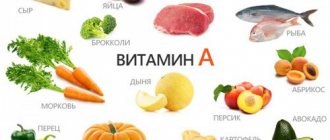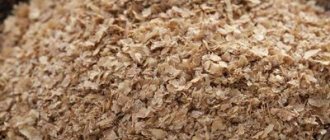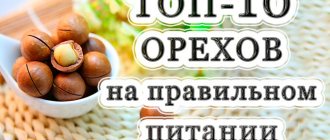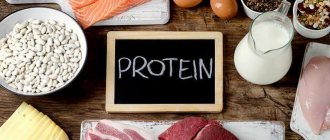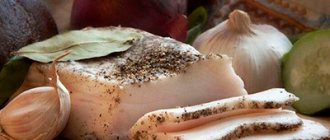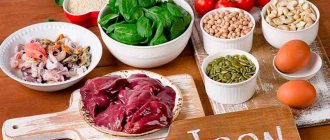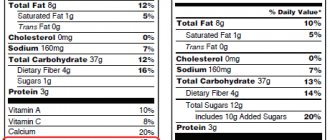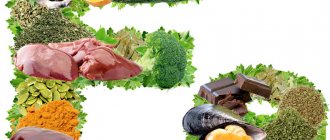With the arrival of cold weather, it is no coincidence that we are drawn to cinnamon rolls and spicy pumpkin soup. It turns out that spices can make winter much more pleasant.
Spices and seasonings are not taken seriously in our part of the world.
Is some fragrant dust on the tip of a knife capable of making us healthier and happier? But in the Middle East and Asia, spices have long been revered as medicine and are seriously prescribed along with medicines. This could be considered a funny cultural fact if not for the results of modern scientific research. Laboratory observations show that the usual spice powders are not just a tasty food additive, but also an effective way to influence the functioning of the body and a person’s well-being. It is known, for example, that the aromatic compounds in cinnamon can activate areas of the brain responsible for cognitive abilities and memory. This is probably why we remember good days with buns and cocoa for the rest of our lives (unlike important phone numbers). Another example is ginger: this root, among other skills, quickly copes with nausea of any nature. Thanks to scientists, turmeric has become a real superstar of the spice world in recent years. The curcumin molecule in its composition actively fights inflammation and even cancer cells in laboratory conditions.
This all sounds great, but in fact, the authors of scientific papers themselves urge us to treat sensations with healthy skepticism. Situations simulated in laboratories are far from the same as the behavior of a product in a real human body with its individual characteristics. So far, scientists only understand that herbs and spices have medical potential and the possible benefits can be enormous. But it is also clear that a cancer cure based on turmeric or ginger will not appear in pharmacies tomorrow, and perhaps never will appear. Nevertheless, science recommends using spices every day, especially in the cold season, for everyone who has no contraindications or diagnoses incompatible with hot, spicy and aromatic additives. Here are just a few reasons to have a spice rack in your kitchen.
More benefits from regular food
The vast majority of roots and powders used in cooking are plants grown in the tropics and highlands. Life in a harsh climate would be impossible for them without reliable protection. Most often it is caused by rich yellow, red, green and brown antioxidant pigments. They make plants resistant to adversity such as the scorching sun, pests, and temperature changes. In the human body, these chemicals are also able to restore order: bind free radicals, improve blood circulation and metabolism, and stimulate detoxification. In addition, exotic and Mediterranean spices do not contain the same phytonutrients as the vegetables and fruits traditional to our region. And food variety is one of the pillars of proper nutrition, especially in winter, when the choice of fresh foods is limited.
Another great bonus of using spices is that their rich flavor and aroma allow you to cook with less or no salt. For residents of large cities, this is vital: according to WHO estimates, the average citizen eats almost twice as much sodium chlorine as is needed for health. For which he quickly pays with a tendency to edema, problems with the heart and blood vessels, joint diseases, etc.
Use the rainbow principle with your seasonings throughout the day. The more colorful your menu is, including through spices, the more beneficial nutrients will enter the body.
Tables of creatine content in foods
Despite the fact that creatine is synthesized by the liver independently, its amount may not be sufficient for the normal functioning of the body. The deficiency of the substance can be covered by food products of plant and animal origin.
Products of plant origin
The greatest amount of creatine among plant foods is present in soybeans, nuts and seeds.
| Products | Creatine content in g per 1000 g |
| Soy Protein (Isolate) | 11,40 |
| Sunflower flour | 9,20 |
| Soy protein (concentrate) | 8,14 |
| Pumpkin seeds | 7,80 |
| Sesame flour | 7,69 |
| Soy protein | 7,36 |
| Hemp seed | 7,09 |
| Butternut | 6,98 |
| Soybean cake | 6,17 |
| Black Walnut | 5,27 |
| Unroasted sesame | 5,22 |
| Peanuts raw | 4,96 |
| Roasted peanuts | 4,55 |
| Hulled sunflower seeds | 4,36 |
| Roasted sesame | 4,24 |
| Fenugreek seeds | 4,11 |
| Almonds raw | 4,05 |
| Roasted almonds | 4,02 |
| Mustard seeds | 4,0 |
| Brazilian nut | 4,0 |
| Roasted sunflower seeds | 3,7 |
| Chia seeds | 3,67 |
| Roasted pistachios | 3,66 |
| Flaxseed | 3,54 |
| Fresh pistachios | 3,5 |
| Cashew raw | 3,42 |
| Poppy seeds | 3,4 |
| Pine nut | 3,36 |
| Walnut | 3,33 |
| Roasted hazelnuts | 3,17 |
Read useful: Rating of the best casein proteins in 2022 for gaining muscle mass and losing weight
Animal products
The leaders in creatine content are chicken eggs, poultry, beef, game meat, and offal.
| Products | Creatine content in g per 1000 g |
| Chicken egg powder (white) | 10,04 |
| Cooked cuttlefish | 5,14 |
| Boiled octopus | 4,72 |
| Boiled pig ears | 4,55 |
| Cooked Venison | 4,47 |
| Beef cooked | 4,46 |
| Veal cooked | 4,26 |
| Beaver meat (cooked) | 4,26 |
| Chicken egg yolk (powder) | 4,24 |
| Baked Chicken Breast (Skinless) | 4,21 |
| Fried chicken | 4,18 |
| Beef liver (stewed or fried) | 4,12 |
| Cooked rabbit meat | 4,10 |
| Antelope meat (cooked) | 4,10 |
| Elk (cooked) | 4,08 |
| Baked Yellowtail (Lacedra) | 4,08 |
| Bison meat (cooked) | 4,07 |
| Boiled clams | 4,04 |
| Pork fillet (cooked) | 4,01 |
| Anchovies canned in oil | 3,97 |
| Wild boar meat (cooked) | 3,95 |
| Pork spleen (cooked) | 3,87 |
| Pork pancreas (cooked) | 3,85 |
| Baked sockeye salmon | 3,85 |
| Baked pork loin | 3,84 |
| Cooked horse meat | 3.83 |
| Boiled pork tongue | 3,81 |
| Chicken hearts (cooked) | 3,8 |
| Roasted turkey | 3,78 |
| Baked turkey drumstick | 3,78 |
Higher mood and energy levels
The lack of sunlight affects literally all systems of the body. But thanks to spices grown under the bright sun of the tropics, you can live through the winter with a smile on your lips and a charged battery. The main thing in our good mood is chili pepper and other hot varieties. The active substance capsaicin promotes the synthesis of joy hormones endorphins, which means it reduces the risk of seasonal blues.
Almost all spices are characterized by the ability to speed up metabolic processes and tone the body. Of course, it would be naive to expect an energy boost from one serving of Indian curry, but regular use of spices is associated with better metabolism of fats and carbohydrates and overall vigor.
The ability to relieve anxiety and calm, which is also important in winter, is also attributed to cinnamon. It is no coincidence that the smell of apple pie with this spice has become a symbol of home comfort and is replicated in millions of scented candles every year. But most of all, scientists believe in color therapy. Seasonings of the red-yellow spectrum can have a beneficial effect on the brain, exhausted by the grayness outside the window, so cooking rice with a pinch of bright spices is a good winter idea for many reasons.
Contrary to the stereotype, cinnamon is good for more than just pies and cappuccino. Marinade for meat and poultry will only benefit if you add spice to it. For example, according to the scheme “salt, pepper, olive oil, cinnamon, cloves, nutmeg.”
Microbes won't be happy
By the standards of history, spices have only recently become a gourmet ingredient. Initially, they were widely used to veil products of dubious quality and for preservation. The first was dealt with well by volatile aromatic substances, which could overpower many other odors, while the second was dealt with by antibacterial agents in the composition of spices. Cloves, ginger, turmeric, garlic and rosemary top the list of spices that are harmful to pathogens and therefore beneficial for people during the cold season. Of course, ginger tea after this does not become a cure for pneumonia, but it is quite a means of prevention and support of the immune system.
The antioxidants and beneficial substances of most spices are better absorbed with fat. Surprisingly, people intuitively understood this even before the era of mass scientific research: in many gastronomic cultures, spices are usually fried in oil or taken with fatty foods. Fortunately, extra calories should not disrupt your slim figure: the active substances in spices usually stimulate blood flow and, therefore, the metabolic rate.
What is CKD and how does it progress?
Chronic kidney disease (CKD) includes various pathological conditions with damage to renal tissue, which tend to have a long, progressive course with a gradual increase in the severity of renal failure.
It is diagnosed if the patient has signs of damage or decreased kidney function that persist for at least 3 months, regardless of the nosological diagnosis (for example, chronic glomerulonephritis, chronic pyelonephritis, diabetes mellitus, polycystic kidney disease, urolithiasis, arterial hypertension, systemic lupus erythematosus, etc. .). At the same time, changes in glomerular filtration rate (GFR) and data from other laboratory and instrumental methods for studying the excretory system are assessed.
The diagnosis of CKD is based on the following criteria:
- the presence of any signs of kidney damage, including changes in urine and blood tests, confirmed at an interval of at least 3 months;
- any irreversible structural changes in an organ, identified once during a lifetime morphological examination of the organ or during its visualization:
- a decrease in glomerular filtration rate (GFR) of less than 60 ml/min for 3 or more months, regardless of the presence of other signs of kidney damage.
There are several stages of CKD, the main criterion for their diagnosis is the GFR.
- There are signs of damage to the kidney tissue. In this case, GFR is normal or increased.
- A slight decrease in GFR (within 60–89 ml/min) indicates minor impairment.
- Moderate decrease in glomerular filtration rate (30–59 ml/min), this stage is often divided into stages A and B.
- GFR is significantly reduced (15–29 ml/min), severe disorders are diagnosed.
- End-stage renal failure, GFR falls below 15 ml/min. Requires renal replacement therapy.
In older people, a GFR level below 60 ml/min is considered pathological. An indicator above this is considered the age norm if the patient does not have “renal” risk factors. In this case, CKD is not diagnosed.
Appetite and weight under control
Let's talk about cinnamon rolls again. According to research, the essential oils in the spice help regulate blood sugar levels and prevent sudden spikes. So, in theory, baking with cinnamon is almost not a crime against your figure, but a healthy compromise.
But seriously, spices can actually be good for keeping fit. During the cold season, we traditionally eat more “comfortable”, well-satisfying foods. But meat, thick soups, nuts, starchy vegetables and all kinds of pies are relatively difficult foods to digest. Spices can make it easier to digest. Rosemary, chili, turmeric, and paprika are traditionally used for marinating meat and preparing multi-ingredient dishes precisely because they soften proteins and help digest foods of different natures. And quality digestion is already half the battle in the fight for harmony.
No matter how useful seasonings are, the principle of moderation in use is not fraught with problems with the digestive, nervous and cardiovascular systems.
What is it for?
Before you get involved in sports nutrition, you need to understand how a particular drug works and whether it will be effective in achieving your goals. Many people, when asked how a creatine-based supplement works on the body, can answer only one thing: “Builds muscle.” This is correct, but does not reflect the whole picture. It performs many more functions that are beneficial not only for physical performance, but also for health in general.
Biological role
The main effect of creatine in the body is to create an energy reserve to maintain high levels of ATP/ADP in cells that require their maximum concentration. Promotes the regeneration of ATP molecules. Neutralizes acids that are synthesized during training and reduce blood pH, which leads to sore throat and muscle fatigue. Activates glycolysis - the oxidation of glucose to pyruvic acid molecules. Promotes muscle protein production.
However, the properties of creatine are not limited to just activating energy processes in the muscles. It plays an important role in maintaining health and maintaining the normal functioning of many internal organs and systems:
- controls the concentration of cholesterol in the blood;
- has anti-inflammatory properties;
- includes protective functions for the central nervous system in case of coronary artery disease under hypoxic conditions;
- alleviates the condition of muscle atrophy and neuromuscular disorders;
- has antitumor activity;
- improves heart function, reducing arrhythmia.
In 1973, Soviet cardiologist Chazov discovered the powerful effect of creatine on the force of contraction of the heart muscle. This discovery was included in the “State Register of Scientific Discoveries of the USSR.”

